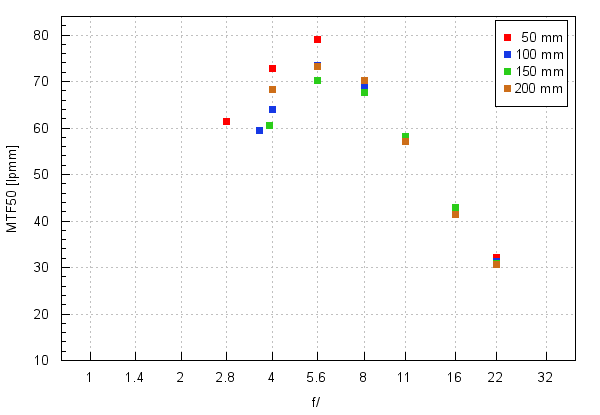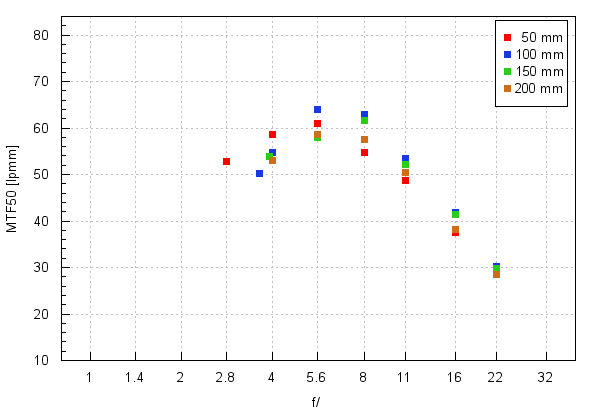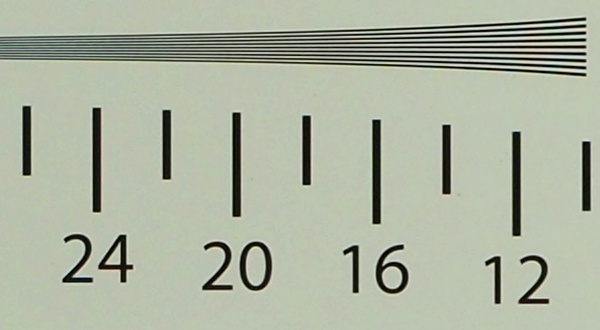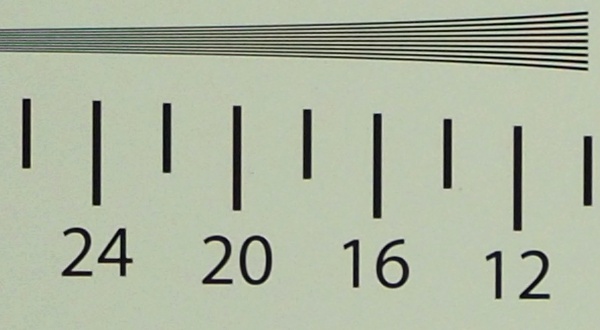Panasonic Leica DG Vario-Elmarit 50-200 mm f/2.8-4 ASPH.
4. Image resolution
Let’s check how the tested lens compares – a graph below presents its results in the frame centre at 50, 100, 150, and 200 mm focal lengths.

Please Support UsIf you enjoy our reviews and articles, and you want us to continue our work please, support our website by donating through PayPal. The funds are going to be used for paying our editorial team, renting servers, and equipping our testing studio; only that way we will be able to continue providing you interesting content for free. |
- - - - - - - - - - - - - - - - - - - - - - - - - - - - - - - - - - - - - - - - - - - - - - - -
The performance of the tested lens is very good – it is able to reach 60 lpmm or higher across the focal range already from the maximum relative aperture. There are no record broken here but these are hardly expected from telephoto zoom lenses with such an aperture fastness. In the Micro 4/3 system records can be broken near f/2.8 and in this case such a fastness is available only at the shortest focal length and it is its maximum relative aperture, still influenced by many optical aberrations. However that good aperture fastness allows you at 50 mm get the best results which, on stopping down the lens, soar to near 80 lpmm.
What’s interesting and praiseworthy, the producer additionally decided to optimize their instrument for the longest focal length despite the slowest aperture, offered at that place. It was a difficult task, in the Micro 4/3 system diffraction is already felt from f/4.0 to f/5.6 focal range and when you join that with other optical aberrations the achievements of the lens can be diminished very badly. Here they saw to achieving good results so your photos at 200 mm are sharp and really beyond reproach.
However, in order not to paint an overly rosy picture, you must add that with such a high price of the tested lens there should be more results close to 80 lpmm.
Now let’s check how the Panasonic Leica DG Vario-Elmarit 50–200 mm f/2.8–4 ASPH. fares on the edge of the frame – an appropriate graph we show below.

The situation is similar – you get very solid values but without fireworks. Already from the maximum relative aperture the results land near 50 lpmm so a level we consider to be useful. The middle of the focal range is better for a change and – as the next chapter will explain – it’s due to good chromatic aberration correction.
At the end, traditionally, we present crops taken from photos of our resolution testing chart saved as JPEG files along RAW files we used of the analysis above.
| Olympus E-M5 II, JPEG, 50 mm f/5.6 |
 |
| Olympus E-M5 II, JPEG, 100 mm, f/3.6 |
 |






